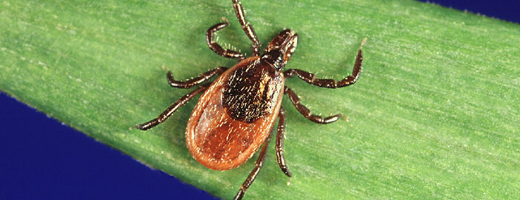Some people’s greatest fear is feeling the prickly sensation of a tick crawling up their leg. Luckily for northern Manitoba, the biggest dangers related to ticks are not in the region - at least, not yet.
Of the two common species of tick found in Manitoba, only one is found in the Northern Health Region - the wood tick, also known as the dog tick.
According to the University of Manitoba’s department of entomology in the Faculty of Agriculture, ticks are most active when temperatures consistently hover around 20 degrees celsius.
The deer tick, also known as the black-legged tick, is the most dangerous tick found in Manitoba, but it has not been detected in the Northern Health Region (NHR). Deer ticks are carriers of the bacteria that cause Lyme disease and other dangerous diseases.
While deer ticks aren’t in the area, they are crawling further north. According to passive surveillance from Manitoba Health, Seniors and Active Living, deer ticks have been found north of Swan River along Highway 10.
Manitoba tracks tick-borne illnesses and deer tick population areas. In 2006, Manitoba identified seven areas - by 2014, they were tracking 22. Each year, the province releases a report tracking illnesses and deer tick populations.
“The key driver of this rapid range expansion and subsequent establishment of black-legged tick populations is climate change,” the report reads.
“In particular, warming temperatures have allowed for increasing black-legged tick abundance in established areas, expansion to more northern reaches and increased seasonal activity and hence opportunities for contact with human populations.”
Manitoba’s tick tracking program includes online surveillance. Residents can take photos and upload them to forms.gov.mb.ca/ticksubmission. Submitters are asked to store suspected deer ticks in a sealed container.
“Black-legged ticks survive best in locations that provide them with moist, shaded habitat. Wooded or forested areas are very suitable because the trees provide shade and leaf litter for ground cover to protect active ticks,” Manitoba’s website reads.
“Rivers and streams act as natural wildlife corridors and these habitats support populations of small mammals, birds and large mammals such as deer which are the natural hosts for the black-legged ticks. These riparian areas (river and stream edges) may support the expansion of black-legged tick populations into areas such as the prairies where the habitat is otherwise unsuitable.“
To properly remove a tick, use tweezers to grab the tick close to the skin and pull upward without twisting or jerking.




